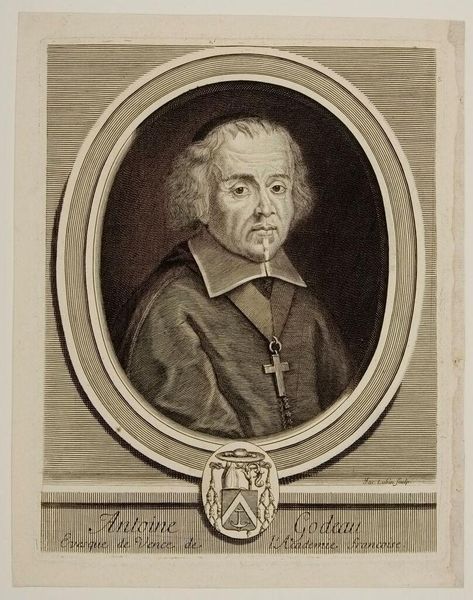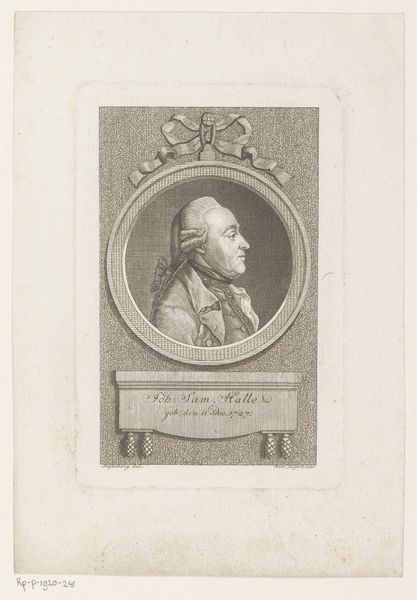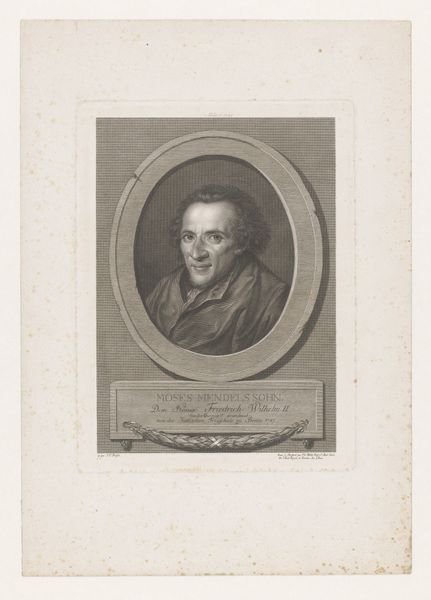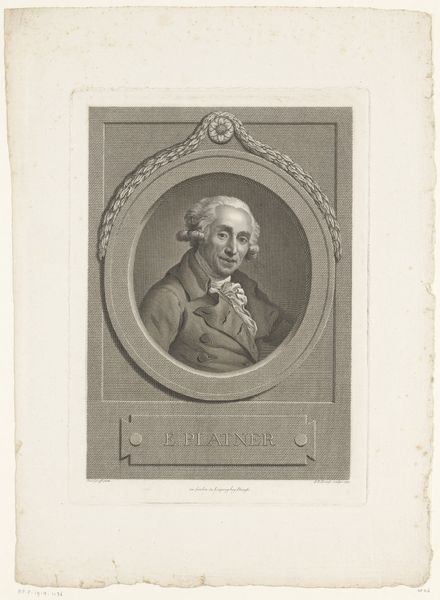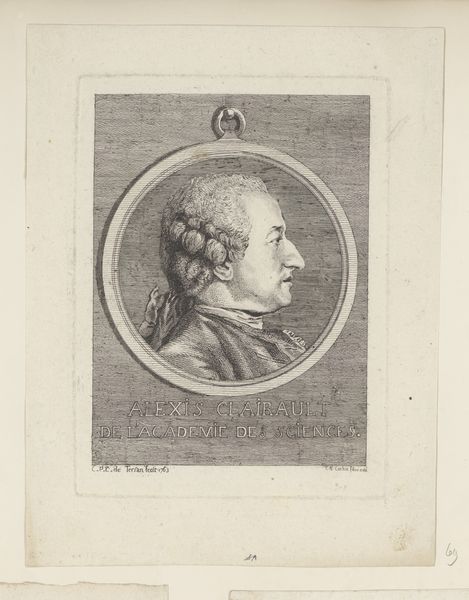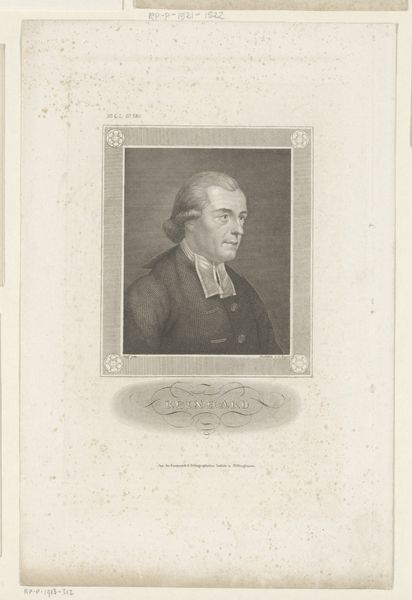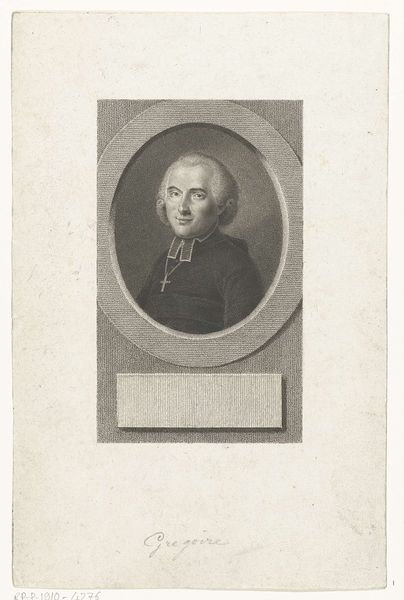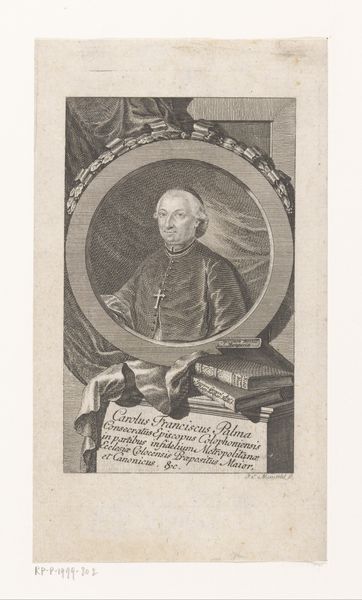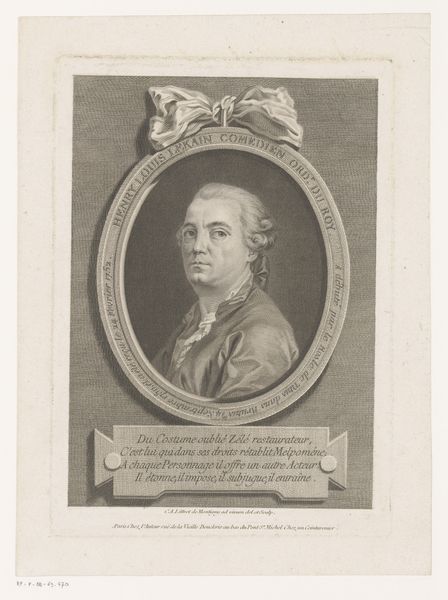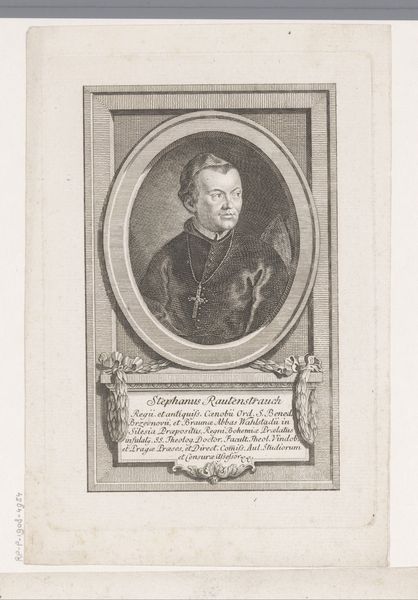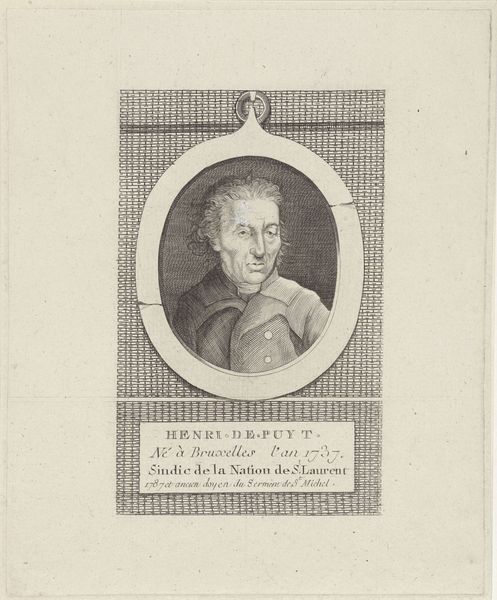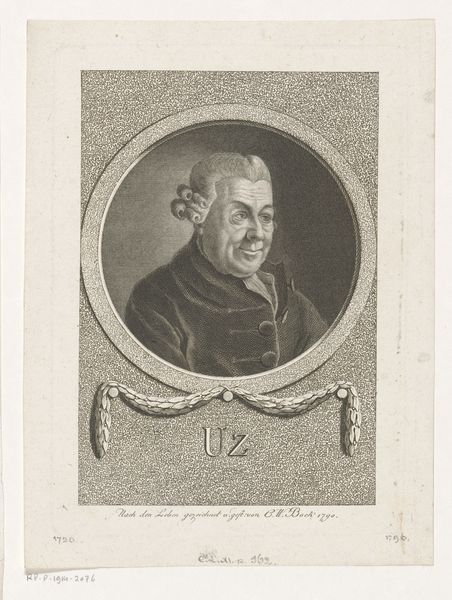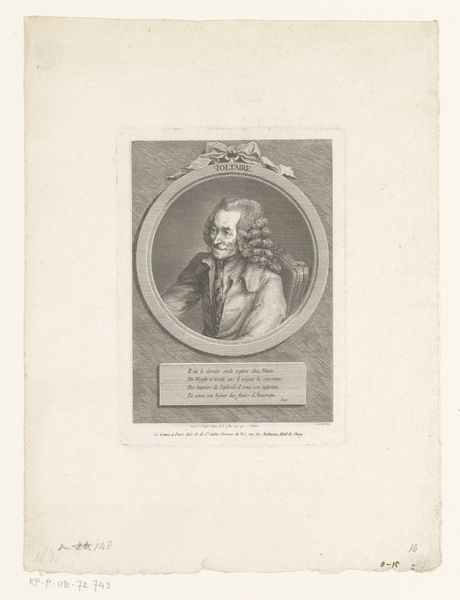
print, engraving
#
portrait
#
baroque
# print
#
academic-art
#
engraving
Dimensions: height 249 mm, width 194 mm
Copyright: Rijks Museum: Open Domain
Curator: This is a portrait of Antoine Godeau, a print created between 1696 and 1700 by Jacques Lubin. Editor: Immediately striking is the tight, almost claustrophobic framing within that oval. It seems to intensify the gaze, wouldn’t you say? There's a formality that borders on severity, yet hints of a nervous vulnerability, if you will, are readable within the image as well. Curator: Indeed. The artist employs an engraving technique, focusing on precise linework to capture Godeau’s features and create texture. Consider how Lubin renders the subtle gradations of tone, building form through intricate cross-hatching within the face and the fabric of his garments. Also, observe the carefully constructed composition using Baroque artistic elements of design. Editor: Placing this within its historical context is so compelling. Antoine Godeau was not only a bishop but also a member of the Académie Française during a period when the Catholic Church and intellectual elites wielded immense power. That emblem there anchors that sense of authority so literally. One might argue that Godeau’s inclusion reinforces structures of power and influence and the social position in 17th-century France. Curator: I think that is also interesting from a formal perspective: the emblem's position below Godeau enhances the visual hierarchy within the print and balances the density of the facial details. Editor: Agreed. The contrast between the elaborate textures and simplified geometric shapes—the circle, the square in the emblem—creates this visual rhythm I find interesting. This, though, only deepens that reading around class and power I initially mentioned. I cannot help but wonder how accessible such a portrait was. How many in the French public had access to engage critically with these powerful figureheads? Curator: Well, regardless of reach at the time, from the printmaking perspective, it shows an incredible skill and precision that stands alone even outside of social implications. The controlled use of light and shadow, for example. Editor: True enough. Seeing art is about finding that balance, isn't it— between aesthetics and what lies beneath? Curator: A fitting idea for considering Lubin's craft indeed. Editor: Agreed. It provokes further consideration of the ways images both construct and reflect society.
Comments
No comments
Be the first to comment and join the conversation on the ultimate creative platform.
